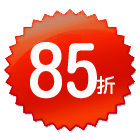前言 INTRODUCTION
(If you are under fifteen years, eight months and three days old DON’T READ THIS)
This book is for the child who:
thinks heaven is in the sky and
hell is under the ground;
has never heard of London or Paris and
thinks a Dane is a kind of dog.
It is to give a traveler’s view of the World—but not a commercial traveler’s view.
It is to show the child what is beyond the horizon, from “Kalamazoo to Timbuktu.”
It is to show him not only “the Seven Wonders of the World” but the seventy times Seven Wonders of the World.
When-I-was-a-boy in New England we had for Thanksgiving six kinds of pie: apple, peach, cranberry, custard, mince, and pumpkin, but I was allowed to have only two kinds and I never could make a satisfactory choice. I have had the same difficulty in selecting geographical places and subjects to tell about. There are too many “most important” places in the World to be included in this first survey, and there will inevitably be those readers who will wonder why certain countries and certain places have been omitted, especially the place where the reader may live.
To me, as a child, geography was a bugbear of repellent names—Climate and Commerce, Manufactures and Industries, and PRODUCTS, PRODUCTS, PRODUCTS. It seemed that the chief products of every place in the World were corn, wheat, barley, rye; or rye, barley, wheat, corn; or barley, corn, rye, wheat. In my geography modern Greece had but a paragraph—because, I suppose, it did not produce wheat, corn, barley, rye. Geography was a “stomach” geography; the “head” and “heart” were left out.
I loved the geography pictures and maps but hated the text. Except for an occasional descriptive or narrative paragraph the text was wholly unreadable—a confused jumble of headings and sub-headings and sub-sub-headings: HOME WORK, NOTES, MAP STUDIES, Suggestions to Teachers, HELPS, Directions, Questions, REVIEWS, PROBLEMS, Exercises, Recitations, LESSONS, PICTURE STUDIES, etc., etc., etc.
The World was an orange when I went to school, and there were only three things I can remember that I ever learned “for sure”—that the Dutch children wore wooden shoes, the Eskimos lived in snow houses, and the Chinese ate with chopsticks.
We had a question and answer catechism which we learned as we did the multiplication tables. The teacher read from her book:
Q. “What is the condition of the people of the United States?” and a thirteen-year-old boy in the next seat answered glibly: A. “They are poor and ignorant and live in miserable huts.” At which astounding statement the teacher unemotionally remarked, “No, that’s the answer to the next question, ‘What is the condition of the Eskimos?’ ”
When my turn came to teach geography to beginners nine years of age, I found the available textbooks either too commercial and industrial, on the one hand, or too puerile and inconsequential, on the other. Statistics and abstractions were entirely beyond the ken of the child of nine, and random stories of children in other countries had little value as geography.
As I had been a traveler for many years, had visited most of the countries of the Globe, and in actual mileage had been five times the distance around the World, I thought I would write a geography myself. Vain conceit! A class would listen with considerable attention to my extemporaneous travel talks, so I had a stenographer take down these talks verbatim. But when I read these notes of the same talk to another class, then it was that I discovered a book may be good—until it is written. So I’ve had to try, try again and again, for children’s reactions can never be forecast. Neither can one tell without trial what children will or will not understand. Preconceived notions of what words they should or should not know are worthless: “Stupendous and appalling” presented no difficulties whatever but much simpler words were misunderstood.
I had been reading to a class from an excellent travel book for children. The author said, “We arrived, tired and hungry, and found quarters in the nearest hotel.” The children understood “found quarters” to mean that the travelers had picked up 25-cent pieces in the hotel! Then again I had been describing the “Bridge of Sighs,” in Venice, and picturing the condemned prisoners who crossed it. Casually I asked if any one could tell me why it was called the Bridge of Sighs. One boy said, “Because it is of big size.” A little girl, scorning his ignorance, said, “Because it has sides.” A boy from the country, with a farfetched imagination, suggested it might be because they used “Scythes”; and a fourth child said, “Because it belonged to a man named ‘Cy.’ ”
The study of maps is interesting to almost all children. A map is like a puzzle picture—but new names are hard. And yet geography without either name or place is not geography at all. It is only fairyland. The study of maps and names is therefore absolutely essential and large wall maps most desirable.
Geography lends itself admirably to research on the part of the child. A large scrap-book arranged by countries may easily be filled with current pictorial news, clippings from magazines and Sunday newspapers, and from the circulars of travel bureaus. There is a wealth of such scrap-book material almost constantly being published—pictures of temples in India, pagodas in China, wild animal hunts in Africa, parks in Paris—from which the child can compile his own Geographic Magazine. Furthermore, the collection of stamps offers a most attractive field, particularly for the boy just reaching the age when such collections are as absorbing as an adult hobby.
Of course, the best way to learn geography is by travel but not like that of the business man who landed in Rome with one hour to see the city. Jumping into a taxi and referring to a slip of paper, he said: “There are only two things I want to see here—St. Peter’s and theColosseum. Drive to them as fast as you can and back to the station.” He was accordingly driven to St. Peter’s. Sticking his head out of the window he said to the driver, “Well, which is this?”
In the little town where I was born, there lived an old, old man whose chief claim to distinction was the fact that he had never in his whole life been ten miles away from home. Nowadays travel is so easy that every child may look forward to traveling some day. This book is to give him some inkling of what there is to see, so that his travel may not be as meaningless as that of the simple sailor who goes round the world and returns with nothing but a parrot and a string of glass beads.
?
?

